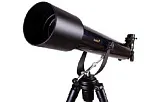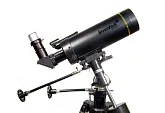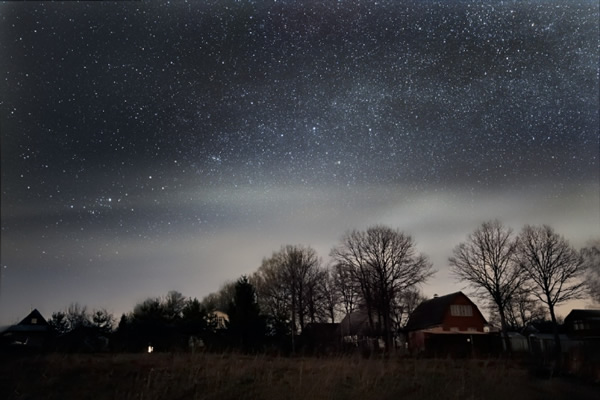Migliori telescopi per rapporto qualità-prezzo
by Lexian on 06/13/2012
A few weeks back we've organized another 'Stargazer's night' event, and a lot of people came to observe the night sky. And I've noticed that most of them don't have any idea about how easy it is to become stargazers themselves. They keep on saying that there aren't any observatories where they live, and no secret stargazing societies either. So I've decided to write an article that explains that it isn't all that hard to take your first steps in amateur astronomy.
Regular telescopes aren't at all like those huge monstrosities you see in observatories. They are very compact and will easily fit in your closet. Of course, they are not as powerful as the observatory telescopes; but you can still see the lunar craters and the rings of Saturn, and so much more with them.
A few telescopes at my country house.
You can tell their size by the apples on the ground.
Don't fret if you don't know where to start, which way to point the telescope and how to locate stars. Some telescopes, like the Levenhuk Strike NG series, are perfect for beginning astronomers. They come with a reference book that describes all you need to do in detail. The books even include star charts, so you can find something interesting for your observations. These telescopes are very easy to use and don't require any calibration before observations. With a compass and a planisphere included in the kit, you will be able to locate just about anything on your first try.
You can actually perform observations from your balcony. Or take your telescope to the countryside and enjoy the clear night sky there. These entry models are very durable and easily transportable. Just pack the tube with a tripod in the box they came in and you're good to go. You can even fit this box on the back seat of a Mini. These telescopes are very light: a Levenhuk Strike 50 NG, for instance, weighs about 3.6 kg (7.7 lbs.). Some models are about 6 kg (13 lbs.), but still, it's not some bulky professional or scientific equipment.
There was a time when it was nigh impossible to purchase a telescope; you had to search for it everywhere and pay tons of money to get one. These days, an entry model costs around $100, or maybe $200. Mind you, this is a proper telescope that can show you the Moon and the Solar System planets. Levenhuk Strike 50 NG, for instance, is about $100. Of course, it's not that powerful. If you want to try your hand at astrophotography (taking pictures through a telescope), you'd want to choose something more advanced.
For now, until you make the final decision to buy a telescope, go out into the streets, or better yet, drive to the countryside, and enjoy the depths of the pitch-black sky. The secrets of the universe are ripe for discovery. You just have to take that first step.
È vietata qualsiasi riproduzione del materiale a scopo di pubblicazione in qualsiasi supporto informatico e in qualsiasi formato. È possibile fare riferimento a questo articolo con il link attivo su it.levenhuk.com.
Il produttore si riserva il diritto di apportare modifiche al prezzo, alla gamma di prodotti e alle specifiche o di interrompere la produzione di prodotti senza preavviso.





